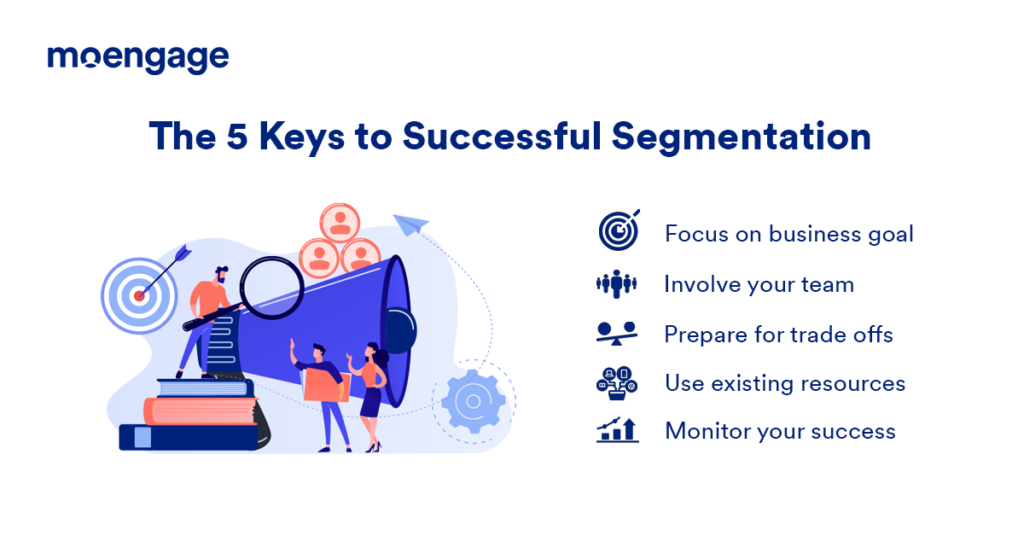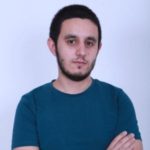The 5 Keys to Successful Segmentation

Reading Time: 4 minutes
No company’s products are for everyone, and most companies lack the resources to target large masses in their marketing efforts. That’s why knowing your product’s market segment is crucial for effective promotion. Without it, you’ll be relying on hope rather than customer segmentation, resulting in ineffective marketing.
Segmentation is the practice of grouping customers with similar needs and preferences. It enables companies to allocate their marketing resources effectively by providing products and services that meet specific customer needs.
In this article, we explore the key characteristics of segmentation and discuss 5 keys to successful segmentation to help you understand how it works.
Criteria for successful segmentation

As you start to research and segment your target audience, it’s important to know that not all information you find will be equally valuable. Here are the main characteristics to consider:
1. Identifiable
Your segments can be identified through clear and defined metrics, which are demographic or behavioral. The demographic is when you segment your customers by age and gender. Behavioristic segmentation is when you segment your customers into groups based on how and when they use the product.
2. Substantial
Your segments should be large enough to make the efforts and investment worthwhile. For example, if the number of customers you are going to reach through video content on YouTube is small, there may be no point in investing considerable resources to market yourself on that platform.
3. Differentiable
Different segments should have varying needs and behaviors so you can communicate with each segment through tailored messages. Using A/B testing of paid ads, different content types, varying headlines to emails, and differently styled YouTube thumbnails for your videos will give you valuable insights into what needs and preferences your customers have.
4. Actionable
The segments you’ve identified can be reached, and you can communicate with them through digital and offline channels.
Requirements for successful segmentation

Now, that you have an idea of what data to pay attention to, let’s take a look at the 5 requirements for effective segmentation.
1. Focus on your business goal
As customer segmentation is one of the biggest insights you can get that will drive your business, solid planning is essential. Before starting the segmentation process, you should first understand your business goals. Ask yourself why you want to segment your audience and what the goals you are trying to achieve are. Answering those questions is critical, as the answers to them will drive your further actions. From the very beginning, you need to:
- Set expectations
- Identify the audience you plan to segment
- Define your business goal
Businesses don’t create segments. They uncover them.
Understanding who and why you are targeting from the beginning will alter the course of your actions in more ways than you can imagine.
2. Remember that segmentation is not only about marketing
While segmentation plays a critical role in sales and marketing, it’s crucial to remember that it doesn’t belong only to the marketing department. Everyone in your team, from designers to programmers, should be on board with the segment your business is targeting, as it will have a direct effect on their work.
For example, if a designer is not aware of the customers they are creating the design for, the end result may be damaging. You can go as far as introducing the segments you are targeting during the employee onboarding process. This will help you involve all teams in the segmentation process, putting your audience in the center.
3. Know that there will be trade-offs
As it will be impossible to cater to everyone’s wishes, it’s critical to know from the very beginning that, at some point, you will face trade-offs. The ability to make smart trade-offs is an important skill that will ensure the success of your segmentation process. It will help you concentrate your efforts on improving client relationships with highly targeted customers instead of spreading yourself too thin by trying to appeal to everyone.
Making a smart trade-off won’t be easy and will require thinking and planning. Take time to focus and understand the prospects that you want to keep and that you are ready to let go of.
4. Make use of existing resources
This step is not only about financial resources.
While having the budget to run paid ads on different platforms does help significantly during the segmentation process, it’s not the only resource you may have. Many businesses sit on large amounts of user data they have but don’t put it into action.
For example, if you have a website that has tracking cookies enabled, this may give you insights into where your primary audience is located. And this is only one example! Make sure to brainstorm with your team to understand some of the resources you didn’t initially consider that could be implemented during your segmentation efforts.
5. Monitor your success
The only way you know whether you’ve reached your goal is by evaluating. From the very beginning, consider the mechanisms that you are going to implement to monitor what works best with your audience, where the greatest ROI is, what type of content different segments prefer, and which channels perform better.
You can then use this information to adjust your segmentation strategies and messages. This will also give you information on how well you cater to the needs of specific segments and how your business can fill those gaps.
Successful Segmentation Best Practices: Key Takeaways
The points discussed above are key factors you should consider when starting a segmentation process. Once your business starts to segment its customers, your marketing planning will become easier, as you will know to whom you are directing your messages.
This newly-found company focus and customer-centered approach will help marketers of your company become more efficient in terms of time and money usage while improving your market competitiveness and reaching new clients.
Here’s What You Can Read Next |













